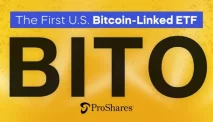DOT holders can also stake their tokens to secure the network and earn rewards, by either becoming validators or nominating validators. Validators are responsible for producing blocks, validating parachain transactions, and participating in consensus.
Nominators are DOT holders who delegate their stake to validators, and share the rewards and risks with them. Finally, DOT holders can bond their tokens to create or connect parachains to the network, by bidding in auctions that allocate a limited number of parachain slots.
Who Are the Founders of Polkadot?
Polkadot is the flagship project of Web3 Foundation, a Swiss non-profit organization with a mission to facilitate an open-source, fully functional, and user-friendly decentralized web. Polkadot was founded by Dr. Gavin Wood, Peter Czaban, and Robert Habermeier. Dr. Gavin Wood, a co-founder of Ethereum, envisioned Polkadot as a solution to address scalability, governance, and security challenges faced by existing blockchains.
Wood, Web3 Foundation’s president, is the most well-known of the trio, thanks to his industry influence as Ethereum co-founder, Parity Technologies founder, and the creator of the smart contract coding language Solidity. Wood is also credited with coining the term Web3, and is the author of the Polkadot whitepaper.
Habermeier is a Thiel Fellow and an accomplished blockchain and cryptography researcher and developer. He is the co-founder and former core developer of Polkadot, and a member of the Rust programming language core team.
Czaban is the former technology director of Web3 Foundation, with a wealth of experience across highly specialized fintech industries. He is also the co-founder and former CEO of Iris.ai, an artificial intelligence company that helps researchers find relevant scientific papers.
Why is Polkadot Important?
Polkadot’s importance lies in its ability to enable seamless communication and data sharing between different blockchains. By providing a scalable and secure infrastructure, Polkadot aims to usher in a new era of decentralized applications (DApps) and blockchain innovation.






